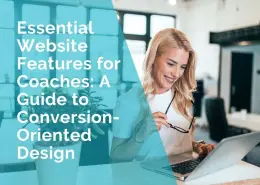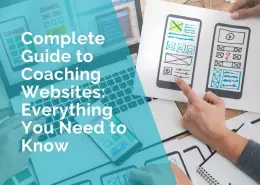Wait Till You See What Makes Visitors Flee From Your Website
Websites don’t become successful by accident. It takes a lot of hard work and tweaking to come up with a great formula, which will not only entice visitors to come to the website but also make them want to stay, explore, interact, come back again and again and even make a purchase.
Many first time entrepreneurs give up far too easily. Instead of testing new concepts, designs, and processes, they figure their website is not working and abandon ship.
The truth is, there is no secret formula which will work for everyone. What may work in one industry, may fail in another, so it is important that you test, update and test again.
The best way to start, is to put yourself in your visitor’s shoes and ask some questions.
What do I expect to see on the website in terms of information and functionality?
How easy is it to navigate?
How difficult is it to complete a process, such as subscribing to a newsletter or making a purchase? Does each process work from beginning to end?
Remember, you not only have to please your visitors, but search engines as well. Here are some things that will make your visitors and/or search engines abandon your website very quickly.
1. Download time – if the website takes too long to display, your customers will click away even before it loads. Don’t forget people are not only looking at your website on their computer, but also on smart phones, whose internet connection may not be that fast.
2. Websites created using only Flash Animation – once these were seen as technically advanced websites, and although they can look impressive, search engines can’t index them easily. Not to mention, visitors often need to download the latest version of the software to be able to view them. And they are not able to be viewed on iPads or iPhones.
3. Lack of information – when people are searching on the internet, they want the information there and then. They don’t want to wait until tomorrow when they can speak to you on the phone. As such, it is extremely important that you provide all the details your potential customers may need to make an informed decision about whether to buy your products or services. And that includes pricing, frequently asked questions, key features and benefits, privacy policy, returns policy, reviews and testimonials from previous customers, etc.
4. Poor navigation – your website may have all the information spelled out, but if your customers can’t find it, they will leave, never to be seen again. So make sure you include your navigation either at the top or on the left handside, as people are used to looking there. Also add a navigation bar at the bottom of your pages, so visitors don’t have to scroll all the way to the top to get onto the next page. Add a Search box, to make it fast and easy to find information. And it is also a good idea to include “breadcrumbs”, especially if your website has hierarchically arranged pages. Breadcrumbs, also referred to as “breadcrumb trails” shows the user’s location on a website. Typically a breadcrumb trail will look something like this:
Home > Clothing > Women’s > Jackets
5. Auto play music – If your website starts blaring music as soon as a customer arrives, you can be sure, they will quickly leave, especially if they are looking at your website during work hours or if they don’t like your music selection.
6. Loads of pop up boxes – it’s ok to have one pop-up box, but make sure people can easily close it and get to your website. Also be aware, many people use pop-up blockers, so your visitors may not even see them.
7. Busy pages – this is a mistake which is often seen on homepages. Business owners are keen to display everything about their business and clutter their first page with loads of sales messages. Unfortunately, people get overwhelmed and leave.
8. Busy backgrounds – if users can’t easily read information on your website, they get tired and go somewhere else. It is best to stick with black/grey writing on white background or white writing on black/grey background. Also make sure that links are easily visible.
9. Poor spelling and grammar – nothing screams more “unprofessional, irresponsible and unreliable” than a website with loads of spelling mistakes and poor grammar. If English is not your first language or spelling is not one of your strengths, ask a friend to proof-read it for you.
It is important to understand that creating your website is not a one off exercise. You should be constantly testing it, adjusting it and updating it. Ask your customers for feedback to see what is working well and what isn’t. Test your forms and your shopping cart process regularly. Remember, you are dealing with computers and things can go wrong from time to time, especially if your webhosting company is upgrading software or hardware.
*****
by Ivana Katz
Websites 4 Small Business – www.web4business.com.au















